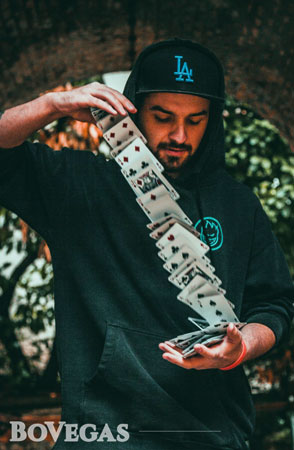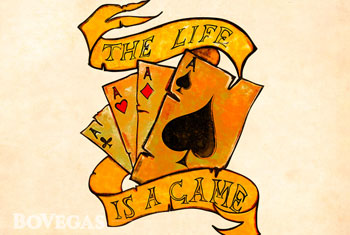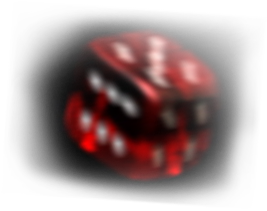



The paradigmatic battle between math and psychology in poker is similar to the classical issue of theory and practice: the point of the game is that both are needed, and neither on its own guarantees you success more than the other. Bright minds have written lots of books on basic poker strategies, and they all agree that math skills should work side by side with psychological tricks.
While all this may well sound a little too obvious and abstract, there are many things worth learning about both the mathematical and psychological approach!
There are two basic methods: the optimal approach to game theory (playing the odds without mistakes) and an exploitative one (using the mistakes of opponents to your advantage). A poker legend, Daniel Negreanu, has even launched a training course on how to combine these approaches. Again, we see that a hybrid method is the best in poker, as the calculation of odds or tricking other participants will not work alone; they must be brought together!
The card counting system in poker can’t be as powerful as in blackjack: because all you can do is calculate the unseen hands and compare them to the winning combinations!
The math that you need in a poker game is not too complicated. What is more, it’s not math as such that you need, but rather the capacities of quick counting, good memory, and logical thinking. Journalist Stian Pedersen claims that professional players do not rely on math, but on heuristics. You won’t have much time for complex mathematical analysis at the table but you will still need to develop a pragmatic mode of play, if you really do want to learn how to become a better poker player.
Using a math-driven approach, you can calculate many things. Many frequencies can be calculated at each individual stage of the game. But the main aspects are the following: knowing pot odds, equity, and expected value. Additionally, you need to understand how betting limits and the betting level of the other players affect the expected value.
Instead of counting, or better with it, poker players can read the hands of their opponents. Mike Gano, a professional poker player, author and coach, has distinguished four steps in this process:

There are four main types of behavior at the poker table:
For example, if you watch Dan Bilzerian playing poker, you will surely notice that his style is more than likely to be loose aggressive when players try to bet big and often.
This is the first task of any poker player to figure out which scheme characterizes their opponents better. Body language and verbal indicators are crucial for the classification of players. An aggressive one will act decisively and directly, trying to grab attention by any possible means, while a passive one will stay calm. As for the loose/tight scale: loose players are more impulsive, and tight ones are very deliberate. Surely, nobody is going to fall 100% into one category: but some tendencies should at least be clear!
To read your opponents, you should not only notice some patterns in their behavior by adding features from the card count but also try to figure out what the other players think about your hand. This complex process consists of a number of stages. Firstly, after evaluating your own hand, you’re thinking about what your opponents have; then, you reflect upon what they think you have; then, you wonder what your opponents think you think they have; and finally, you try to understand what the opponents think you think they think you have. This scheme was introduced by one of the biggest poker minds ever, David Sklansky. It’s hard to get it without practice, but you will eventually master such thinking if you take the care to play reflectively!

Bluffing is an integral part of the game, and it depends a lot on a player’s behavior. Mike Caro, who wrote a book on the body language of poker, claims that learning poker is of essential importance. According to him, the general rule is that weakness usually means strength and vice versa! The thing is that players generally do tend towards fake tells, and the main skill you need is the ability to distinguish a conscious tell from an unconscious one.
You can recognize different types of the opponent by paying attention to their gaming patterns and physical tells. A poker expert David Sasseman gives an idea of what to notice at the table:
Zach Elwood, a poker pro and author of best-sellers, adds that a relaxed person at the table, who has a possibly winning hand, shows more movement; and even their eyes move more!
And some cases even prove that you may not know everything about poker probabilities, and yet still win by bluffing! One psychologist and writer by education, Maria Konnikova, actually managed to win an impressive prize; owing to her shrewd use of psychology!
We’ve mentioned already that poker is about balancing theory with practice and math with psychology. However, it seems that in most cases, the latter is more valuable. In the BBC radio program dedicated to the game of poker, both a mathematician (Alex Bellos) and a psychologist (Richard Wiseman) noted that at the top level, the process is more about reading each other than about understanding the numbers.

Hollywood is famous for its ability to convey emotions and to realize the dreams of viewers on the big screen. So, what could be better than some films about those who were lucky enough to win the lottery? We’re now giving you a chance to look at the top five movies about lotteries and their […]
Nowadays, Internet gambling is a fast-growing multi-billion dollar industry. In the past year, mobile gaming alone saw a growth of $2.7 billion. It’s certainly true that new brands and games are emerging almost every day, trying to win a bit of every player’s attention. But making sure that each and every spin is totally random […]
People who play roulette are very special! They know that there is such a thing as the house edge, and the house is always going to gain a general advantage over the players. They know that the odds are against them and that nobody has become a millionaire purely from playing roulette – unless they […]
Popular belief goes that the gambling system works in such a way that people don’t win, but rather lose in the long run. Allegedly, a player is influenced by psychological tricks in gambling venues. One of the main tricks involves providing a player with the opportunity to win a certain sum, rushing them into the […]
If you love gambling and have been to a land-based casino at least once, you may have thought about becoming a dealer. Playing the same game but from the opposite side, while communicating with other players, sounds like a dream job, right? A dealer is a straightforward job, and you will be the heart and […]
On Monday September 14, MGM announced that it plans to open its first smoke-free casino at the end of September, when Park MGM will finally reopen its venues to players and tourists. The resort comprises around 2,990 rooms and various restaurants, and it’s set to be reopened on September 30. The venue has been closed […]
Online gambling has undoubtedly taken a place of true supremacy over the casino industry during the pandemic. And the reason for that is quite clear: online casinos are more accessible, and you can always count on some encouragement from the casino administration to help you boost your game. However, this digital revolution has only been […]
The large selection of online gambling sites out there can make players somewhat puzzled, and give them a feeling of uncertainty about making the right choice of casino. Each online gambling venue offers its own conditions, games, and various bonuses, of course; but the most important thing is the reliability of the casino and the […]